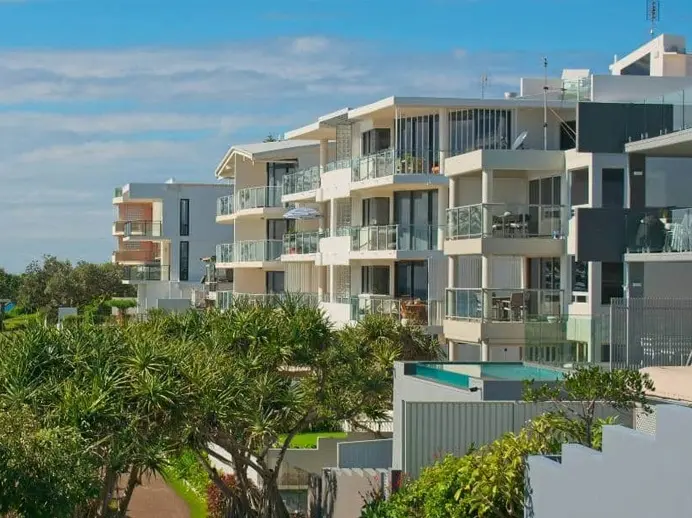Litigation, Articles
What COVID-19 Bankruptcy Relief Measures Mean for Creditors

What COVID-19 Bankruptcy Relief Measures Mean for Creditors
The global COVID-19 pandemic has plunged Australia into what some commentators have described as the worst recession since the Great Depression of 1929.
The disease’s disruption to our economy has been severe and is expected to be prolonged. The impact has already been obvious on the revenues of Australian businesses and the employment of workers. It is also the fact that many businesses and individuals who have loans from financial institutions, or receive goods from suppliers on credit, have been put in a position where they have – or will soon – default on their repayments and face bankruptcy.
This situation is, of course, stressful and challenging for lenders, faced with losing most of their assets, but also for creditors who need to make decisions about enforcing their rights to repayment, helping the lender via a repayment plan or debt agreement, or working out some other solution to recover the amount owing.
As a response to the COVID-19 pandemic, in March 2020 the Australian Financial Security Authority made changes to Australia’s Commonwealth bankruptcy laws to provide relief to those businesses and individuals experiencing financial difficulty.
These special measures were originally scheduled to end in late September but have now been extended to 31 December 2020.
Details of the relief measures
In order to help those whose ability to meet loan repayments or payment for goods supplied on credit, for example, has been affected by COVID-19, the key debt relief measures announced in March and now extended comprise:
- The minimum amount of debt required to activate a bankruptcy notice by a creditor against a debtor is increased from $5,000 to $20,000;
- the amount of time an individual has to respond to a bankruptcy notice is increased from 21 days to six months;
- people can apply for six months debt relief from creditors, an increase from the original 21-day period.
While major financial institutions are able to manage this extended period of debt relief for its lenders due to their size, smaller operators and business owners suppling goods on credit to consumers will be adversely affected. In many cases, they will not be able to pay their own bills and other liabilities as a result of the extension of debt relief for their consumers.
Accordingly, creditors will need to weigh up their options in initiating the enforcement process during this time.
Importantly, a Court Judgment is enforceable for up to six years (or twelve years with leave of the Court). In some instances, a court judgment can attract interest on the debt owed by the debtor at the post-judgment rate, with creditors able to take further steps such as a wage garnishee order to enforce repayment of the amount owing or seizure and sale of an asset. Accordingly, Bankruptcy may not be the only enforcement option available.
If a creditor decides to proceed to Bankruptcy then the customer/debtor can file for Temporary Debt Protection (TDP) with the Australia Financial Security Authority (AFSA), which stops the creditor from being able to take further enforcement action for a period of six months.
The TDP process requires the customer to file a brief statement of their financial affairs with information about income, assets and debts. This information is then supplied to the creditor in order to give them the full picture of the debtor’s position.
The creditor and debtor may then contact each other – with or without legal representation or intervention by the AFSA – during the six-month debt relief period to attempt to work out a debt repayment arrangement.
Personal Property Securities Register
For those supplying goods on credit terms to customers, the AFSA suggests registration on the Personal Property Securities Register (PPSR). An agreement with the customer combined with valid registration on the PPSR can assist creditors in having their invoices paid or the goods returned in the event that the customer is unable to pay or files for bankruptcy.
What if the debtor was already in bankruptcy?
Where a bankruptcy notice was issued before 25 March 2020, It remains the case that the debtor has 21 days to comply with the bankruptcy notice.
Additionally, for those in bankruptcy before the introduction of the Federal government’s Coronavirus Economic Response Package, any support payments are not claimable by the bankruptcy trustee as income or as an asset, regardless of whether you receive the payments before or after the date of bankruptcy.
COVID-19 supplement payments are claimable by the trustee if received before the date of bankruptcy and still in the debtor’s bank account when they become bankrupt.
How we can help you
If you are a creditor with customers facing bankruptcy or require assistance enforcing a Judgment, we at OMB solicitors can help you.
Whether it’s understanding the detail of the COVID-19 debt and bankruptcy relief measures (now extended until the end of 2020), helping you formulate a legally binding debt agreement with a debtor, or initiating court proceedings to enforce a debt, we will help you find a way to recover the debts owing to you so that you return to a strong financial position once the pandemic is over. Call our OMB Gold Coast Solicitors today on (07) 5555 0000 or email us at [email protected] for an initial consultation.
Our Services
Property
Buying, selling or leasing? OMB Solicitors can help you today with all your property law needs.
All Property Services
Business Law
No matter what your business law issue is, OMB Solicitors have a wealth of experience across an array of commercial law practice areas.
All Business Law Services
Wills & Estates
Is your estate plan safe from litigation? Is your will up to date? Who will make decisions for you if you can’t?
All Wills & Estates Services
Family Law
Separated or contemplating separation? Considering a property settlement? OMB Solicitors can help you today with all your family law matters.
All Family Law Services
Body Corporate
Need body corporate advice? Look no further! At OMB Solicitors we are experts in all matters relating to strata and bodies corporate.
All Body Corporate Services
Litigation
OMB Solicitors have an expert team of litigation lawyers to assist in not only litigation, but also exploring other ways of resolving disputes.
All Litigation Services
Insurance
OMB Solicitors’ experienced insurance lawyers are on hand to assist with your insurance law matter.
All Insurance Services
